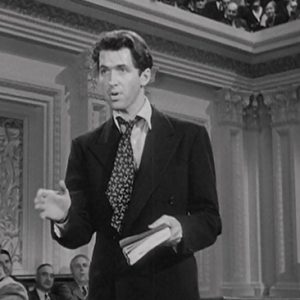Senate Democratic leaders are practically drooling over the prospect that, after six years in the minority, they may be back in the driver’s seat.
They feel so confident in fact, they’ve assembled a War Room to lay the groundwork for a major policy shift to the left starting the minute they take control. And toward the top of their agenda is eliminating a longstanding Senate institution: the filibuster.
The filibuster is a political procedure designed to stall or even derail a specific piece of legislation. And it has been used with lethal legislative effect over the decades. While some Democrats, like Sen. Dianne Feinstein of California and Joe Manchin of West Virginia, say they oppose ending the filibuster, others — most notably N.H. Sen. Jeanne Shaheen — have long championed its demise.
In its original form, which opponents derided as “talking a bill to death,” a senator could talk as long as he or she wanted on a certain bill, for as long as they wished. Without sitting down, that is. The tactic ate up precious—and limited—floor time for debate.
The longest single senator filibuster occurred in 1957, when South Carolina segregationist Strom Thurmond spoke continually for an astonishing 24 hours 18 minutes against a civil rights measure.
The most famous filibuster of all never even happened. The climax of Frank Capra’s 1939 classic “Mr. Smith Goes to Washington” comes when Senator Jeff Smith (memorably played by Jimmy Stewart) brings the Senate to a standstill with his impassioned talkathon.
Those days, however, are over. The process was modified in 1970, when the Senate switched to a “two-track” system designed to keep a filibuster from freezing Senate business in its tracks.
Though the filibuster tactic was first used long before the Civil War, the cloture option of halting it was enshrined as Senate Rule XXII. The only way to end a filibuster is with a vote called cloture.
It takes 60 votes to pass, and these days it’s hard to find five dozen senators in either party who can agree on much of anything. Without it, the filibustering senator talks on and on and on, much the same a football team runs out the clock in a big game.
Now, Democratic leaders say it’s time to abolish the filibuster tradition. They see it as a major roadblock standing the way of their vision to expand the Supreme Court, enact a Green New Deal, and even win statehood for Washington, D.C. and perhaps Puerto Rico.
Filibuster supporters (and there are many) view it differently. They view the tradition nicknamed the “Soul of the Senate” as an important safeguard to the legislative process by giving members of the minority party a mechanism for making sure dissenting opinion is heard. That, they argue, strengthens our democratic heritage.
Given that, it may come as a surprise that some scholars argue the filibuster’s roots can be traced back to one of the great villains of American history.
Aaron Burr was vice president in 1805. In his capacity as president of the Senate, he told the upper chamber it should scrap a rule that cut off debate. Senators agreed, and in 1806 they dropped it. That move, some historians argue, opened the door to more vigorous debate on the Senate floor and paved the way for the filibuster’s creation.
Burr, you will recall, was later charged with treason. Though acquitted, he was forever labelled one of the bad boys of early America, a scoundrel on par with Benedict Arnold.
The tactic of talking a measure to death originated long before the Senate first met. In Ancient Rome, Cato the Younger was a master of the procedure.
He was known for talking nonstop until the sun went down, thus ended the Roman Senate’s business day. His most memorable effort came in 60 B.C., when he tried to oppose Julius Caesar’s return to Rome. (It didn’t work.)
The word filibuster, by the way, comes from the Dutch language. It originally meant a “freebooter,” or a pirate. Now, the Senate’s leading Democrats want to give the filibuster the boot.
While Republicans vow to keep it kicking as long as they can.

